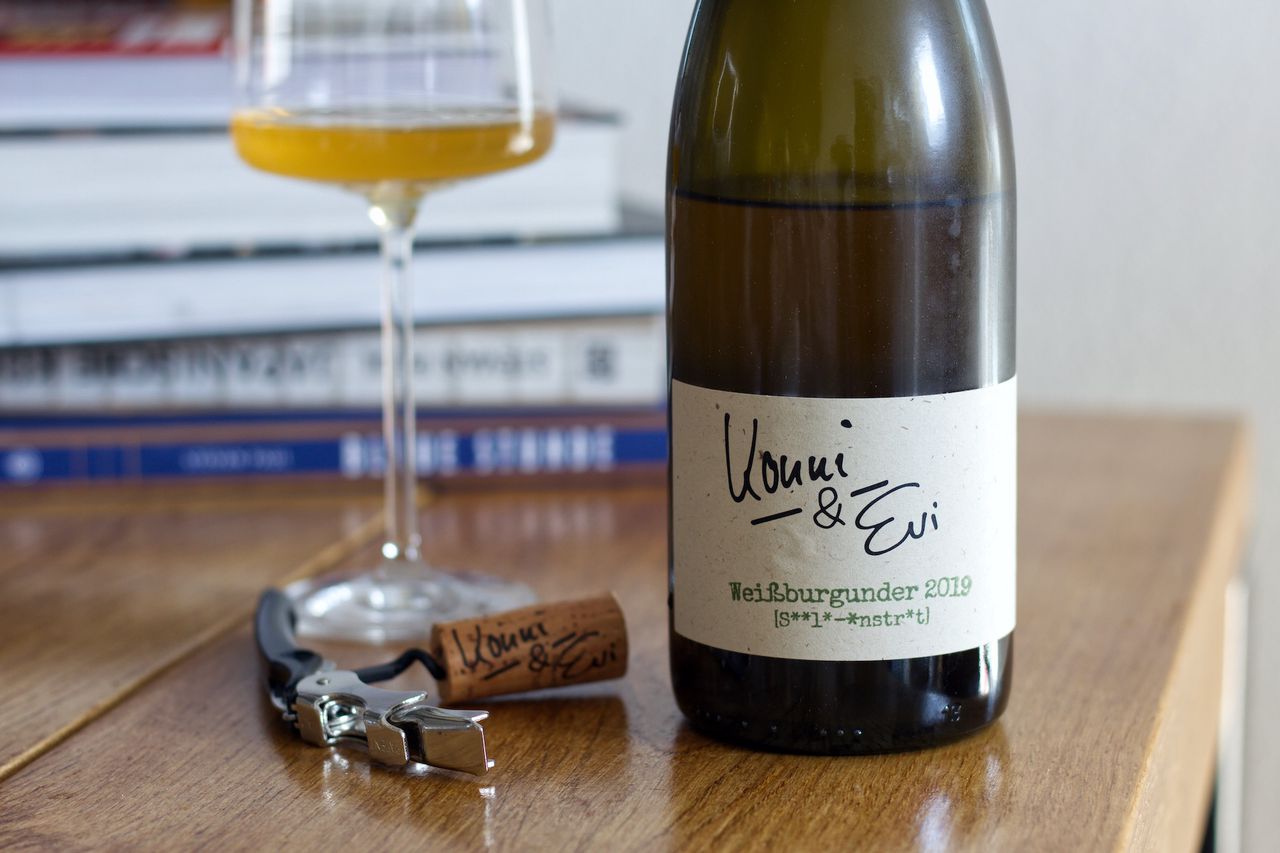Konni & Evi - Weissburgunder 2019
We drink from the winery Konni & Evi a Weissburgunder from 2019.

No resurrection story but at least a completely new discovery for us on this Easter Sunday. I’m probably not going too far out on a limb when I say that I’m not the only one for whom the wine-growing region of Saale-Unstrut is not on the map at all. Wine has been grown there for about 1000 years, there are steep terraces, historic dry stone walls, a wide variety of grape varieties and quite exciting winemakers. Two of them are Konrad Buddrus and Eva-Maria Wehner, who started as Konni & Evi in 2016 with 0.3 hectares and now make natural wines on about 2.5 hectares. With a lot of manual work, grapes grow in steep and terraced sites, which are then harvested relatively early to become exciting wines with low alcohol. This makes them real pioneers in the region. This time we drink a Weissburgunder from vines over 60 years old, which stand on limestone in terraces.
The fact that this is a natural wine is immediately noticeable in the nose. The typical apple skins, something dark, some smoke and a few apple cores. Somehow, however, creaminess is also added, wild, untamed but actually also quite charming. On the tongue, the Weissburgunder seems much brighter, has a great acidity, some structure and not yet quite found its peace. Tannins are joining out at the back. With a little air, it gets yeastier on the nose, a bit herbal vegetabley and now also herbaceous spicy. Let’s see where this goes.
The herbaceousness has become even more intense the next day, we have thyme on the nose and a hint of rosemary. I have that on the back of my tongue as well. There’s fruit there too, but somehow only ever part of it and never so direct or obvious. You have to deal with the wine more intensively. Nevertheless, it is never intellectually-annoying. On the contrary, I find it smells inviting, fresh and surprisingly clear. It’s just that it’s not so easy to hold on to. On the tongue, it continues to pull together with the tannic structure on which you can chew and very slowly a crisp fresh apple comes in.
The development was reason enough for further observations with another night in the refrigerator. Now the nose of the Weissburgunder is reminiscent of orange soda, but without the sweetness and bath water, but in a charming way. It retains the herbs and its natural vibe. The tannin on the tongue, the freshness and the structure do the rest. Not really tangible, certainly not pigeonholed, constantly changing and yet already pretty cool in its final sips. Corners and edges bring tension and the wine has a lot of it.